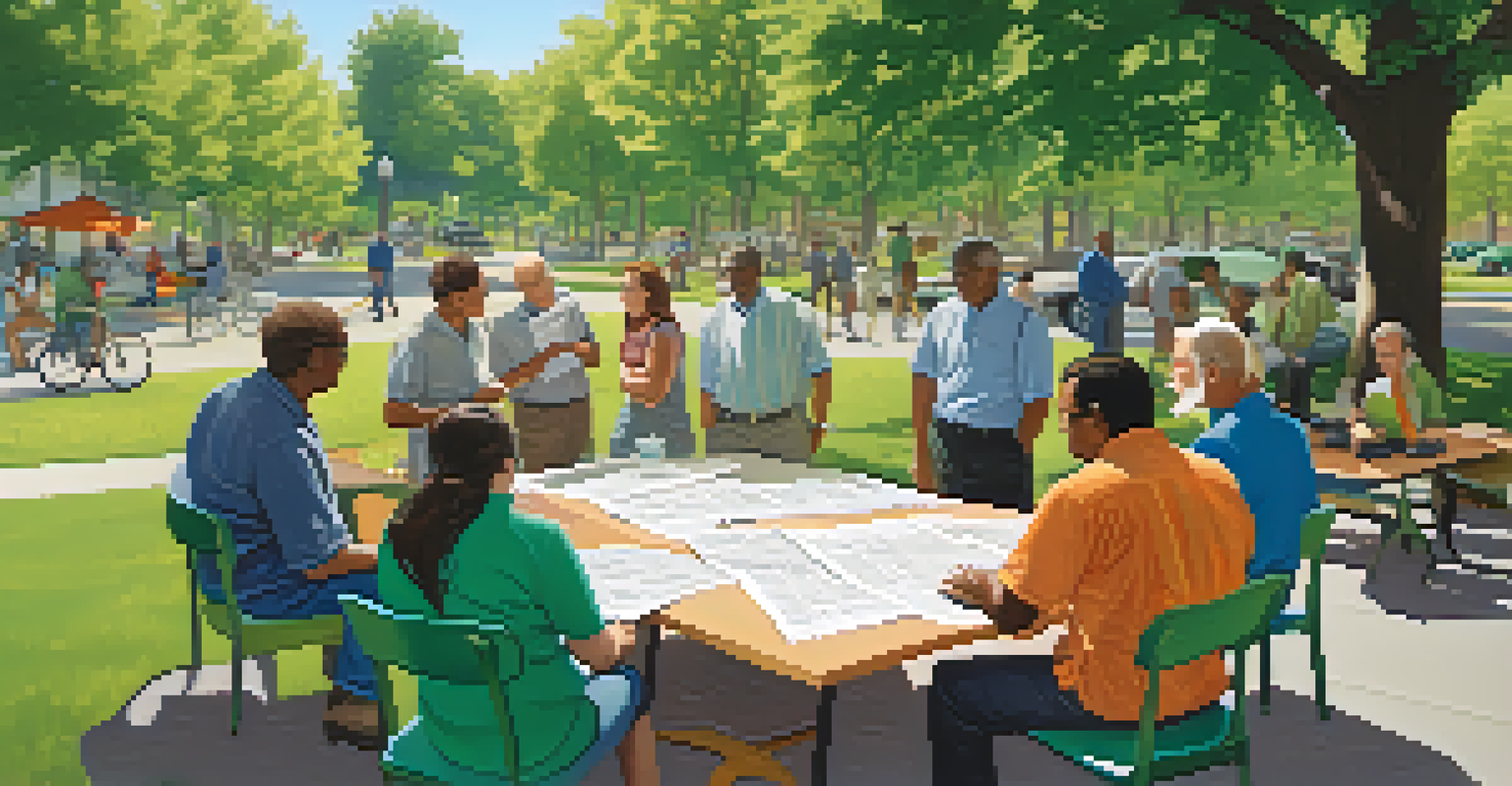NYC's Decaying Roads: The Need for Urgent Repairs

The Current State of NYC's Roads: A Troubling Overview
New York City's roadways have seen better days, with potholes and cracks becoming increasingly common. The wear and tear from heavy traffic, extreme weather, and a lack of maintenance has left many streets in disrepair. These issues not only affect the aesthetics of the city but also pose significant safety risks for drivers and pedestrians alike.
The roads are a vital part of our infrastructure, and when they fail, so does the community that relies on them.
In a bustling metropolis where millions rely on road transport daily, the condition of the roads is more than just a nuisance. It's a critical concern that impacts commuting times, public safety, and even economic productivity. A recent survey revealed that a significant percentage of New Yorkers have experienced vehicle damage due to poor road conditions.
As we navigate through these crumbling streets, it's essential to recognize that these aren't just isolated incidents. They reflect a larger systemic issue within the city's infrastructure, calling for immediate attention and action from city officials and residents alike.
The Consequences of Ignoring Road Repairs
Neglecting the state of NYC's roads can lead to severe consequences, including increased accidents and vehicle damage. When potholes and cracks go unaddressed, they can create hazardous driving conditions that put lives at risk. Additionally, the economic impact is significant, with repair costs skyrocketing as problems worsen over time.

Beyond the immediate dangers, deteriorating roads can also hinder emergency response times. Fire trucks, ambulances, and police vehicles rely on clear and safe routes to reach those in need. Poorly maintained roads can slow them down, potentially putting lives at risk during critical moments.
NYC Roads Are In Critical Condition
The deteriorating state of New York City's roads poses serious safety risks and affects daily commuting for millions.
Moreover, the aesthetic appeal of neighborhoods can decline as road conditions worsen. Residents may feel less inclined to invest in their properties or businesses when surrounded by decaying infrastructure, leading to broader economic implications for the community.
Historical Context: NYC's Road Maintenance Challenges
To understand the current state of NYC's roads, we must look at the historical context of road maintenance in the city. Over the years, budget constraints and shifting priorities have often sidelined infrastructure projects. As a result, long-term maintenance has been neglected, leading to the current state of disrepair.
Infrastructure is much more than just roads and bridges; it's about creating a sustainable future for our cities.
In the past, NYC's roads were considered a vital part of the city's infrastructure, receiving regular attention and funding. However, as other projects gained priority, the focus on roads diminished, and the consequences of this neglect are now evident. With many roads built decades ago, they have simply worn out without adequate upkeep.
This historical oversight has created a backlog of needed repairs, making it increasingly challenging to address the issues effectively. The city's aging infrastructure serves as a reminder that investment in road maintenance is not just a necessity but a responsibility to its residents.
Community Impact: Voices from the Streets
The condition of NYC's roads affects everyone, and community voices are crucial in highlighting these issues. Residents often share stories of close calls with potholes or the frustration of navigating poorly maintained streets. Their experiences provide a firsthand account of the daily challenges posed by decaying infrastructure.
Local businesses also feel the impact as customers hesitate to visit areas with rough roads. A smooth, well-maintained road can encourage foot traffic, while a bumpy, neglected one can deter potential patrons. This ripple effect underscores the importance of road repairs for the economic vitality of neighborhoods.
Ignoring Repairs Leads to Bigger Issues
Neglecting road maintenance can result in increased accidents, economic decline, and delayed emergency services.
Engaging the community in discussions about road conditions can also foster a sense of shared responsibility. When residents come together to advocate for improvements, it can result in more significant pressure on city officials to prioritize repairs and maintenance.
Financial Implications of Road Repairs
Funding road repairs in NYC poses a complex challenge, often involving various sources, including city budgets, state funding, and federal grants. The financial burden of repairs can be daunting, especially when immediate needs are assessed against long-term infrastructure goals. Without adequate funding, many crucial projects may remain on the drawing board.
However, investing in road repairs is not just an expense but a long-term savings opportunity. By addressing issues proactively, the city can prevent more costly repairs in the future. Think of it as maintaining a car: regular oil changes and tire rotations may seem costly at first, but they save you from more significant repairs down the line.
Moreover, improved roads can lead to economic growth through increased property values and better business conditions. When the roads are in tip-top shape, they can attract new residents and businesses, ultimately generating more tax revenue for the city.
Innovative Solutions: Modernizing NYC's Infrastructure
As we look for solutions to NYC's road issues, innovation plays a vital role. New technologies, such as smart traffic management systems and advanced materials for road construction, can significantly improve road conditions. These innovations can lead to longer-lasting repairs and a more efficient use of city resources.
Additionally, cities across the globe have started adopting sustainable practices in road maintenance. From using recycled materials for repairs to implementing green infrastructure that manages stormwater, these approaches can enhance the durability of roads while benefiting the environment.
Community Advocacy Is Essential
Engaging residents and local leaders in advocating for road repairs is crucial for driving change and improving infrastructure.
Collaborative efforts between city officials, engineers, and the community can also lead to creative solutions tailored to the unique challenges faced by NYC. By embracing innovation and collaboration, we can pave the way for a brighter, safer future on the city’s roads.
The Path Forward: Advocating for Change
For meaningful change to happen, advocacy is essential. Residents, community leaders, and organizations must come together to voice their concerns about road conditions and demand action from city officials. By raising awareness, they can put pressure on decision-makers to prioritize road repairs in the city’s budget.
Engaging in local government meetings, participating in community forums, and using social media platforms can amplify these voices. When residents share their experiences and frustrations, it becomes challenging for officials to ignore the pressing need for repairs. This collective action can spark the change that NYC's roads desperately require.

Ultimately, the goal is to create a safer, more efficient transportation system for all New Yorkers. Through unified advocacy efforts, we can ensure that the issues surrounding decaying roads are addressed, leading to a healthier and more vibrant city.